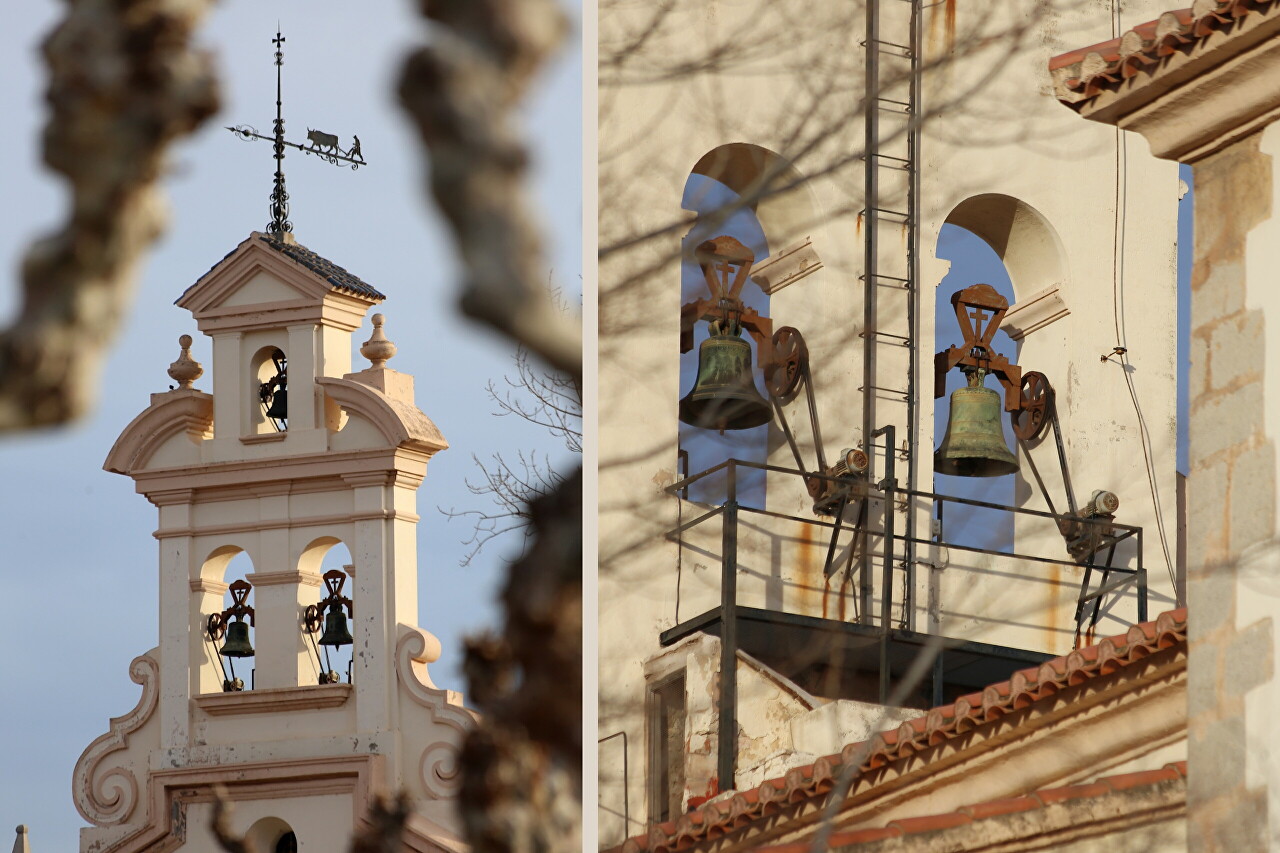Basílica de la Mare de Deu del Lledó, Castellón de la Plana
From Plaza Maria Agusina, the Avenida de la Mare de Déu del Lledó leads to the serevro-east. After walking along it for about a kilometer and a half, I saw a sanctuary built on the site of a wonderful find that became the main legend and patroness of the city, the Basilica of Our Lady of Ledo.
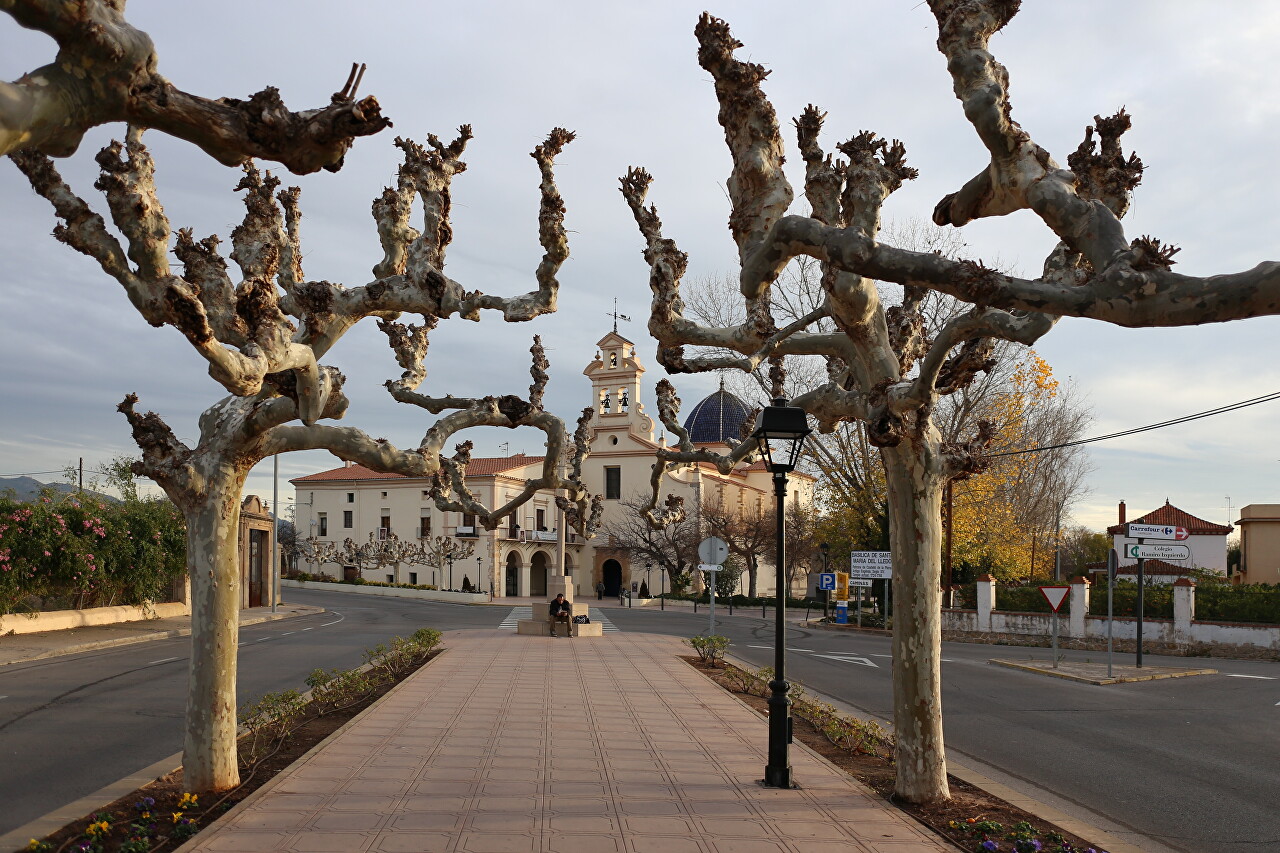
In 1366, a peasant named Peroto de Granyana was plowing the land in his field. Suddenly, near a hawthorn bush, the oxen pulling the plow suddenly stopped, and did not want to move in any direction. Walking around the animals, Peroto found a small, about 15 cm, figure of a Virgin under a bush. The farmer took it with him, but the next morning the statue disappeared. When Peroto returned to the field, he found her again under the same bush. The next morning, the story was repeated, and the peasant came to the city and told the city council about it. The city fathers considered the farmer crazy, but still came to the field of Peroto, where they saw the appearance of the Virgin Mary surrounded by angels. Then the city council decided to build a church on the site of the miraculous find, the statuette became a city relic, and the image of Peroto plowing a field can be seen on the weather vane of the church.
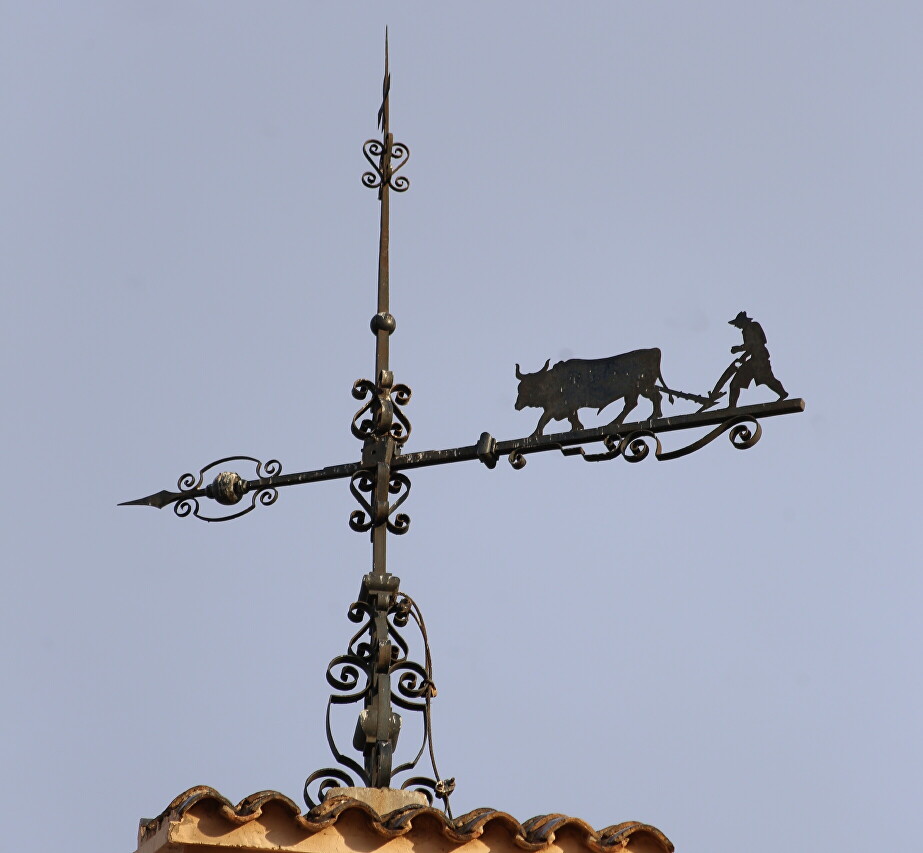
The first chapel on the site of the miraculous find was built by 1394. It was a small one-nave basilica with a gable roof on Gothic arches. Inside was a richly decorated reliquary, where a wonderful statuette was placed, which received the name Deu de Lliedo, which means "Virgin of the hawthorn"in Valencian.
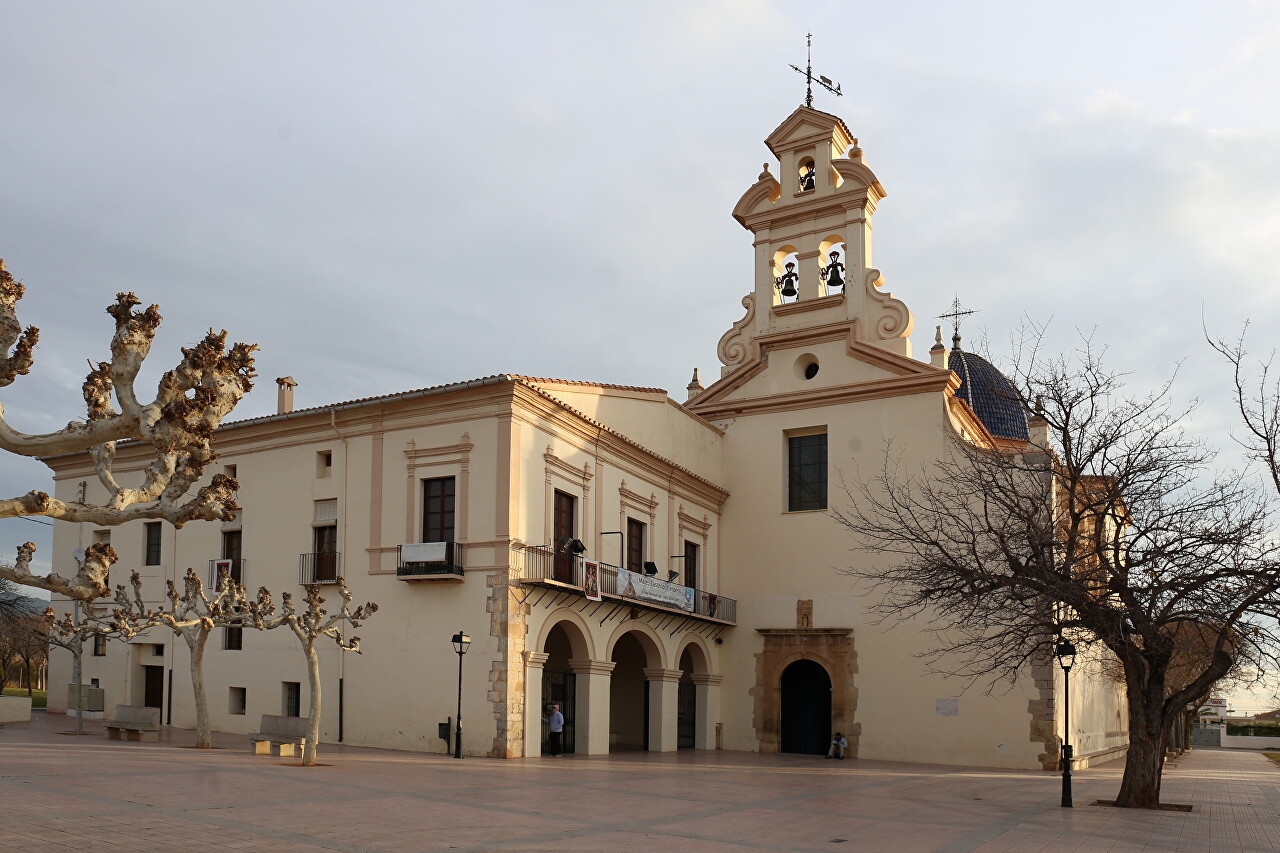
Three centuries later, in 1659-1670, the church was expanded and a new sanctuary was added to it. In the XVIII century, the Brotherhood of the Virgin of Ledo was founded, which built a small monastery next to the basilica.
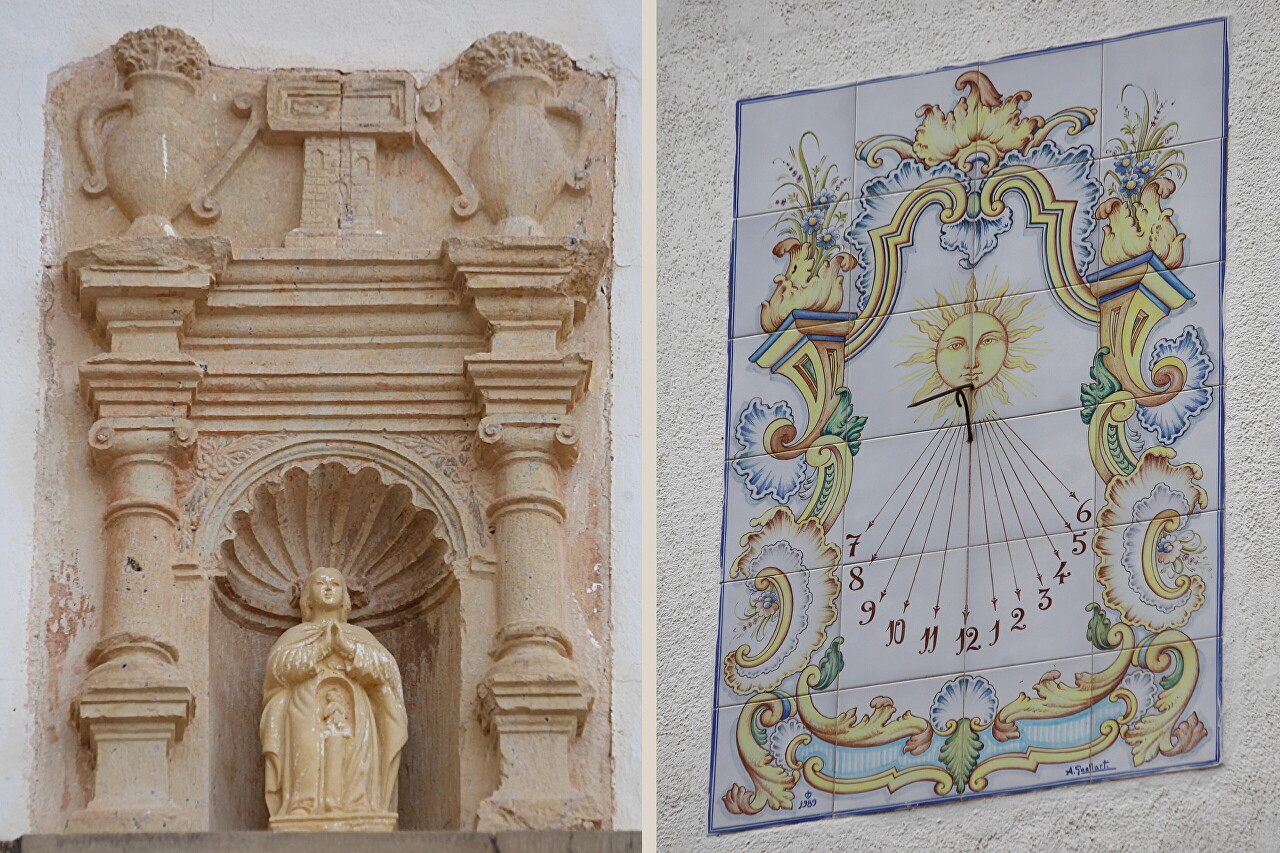
What we see today is built in the 18th century. In 1724, the construction of a new church began in the neoclassical style, which included all the previously built structures, the church was opened in 1766.
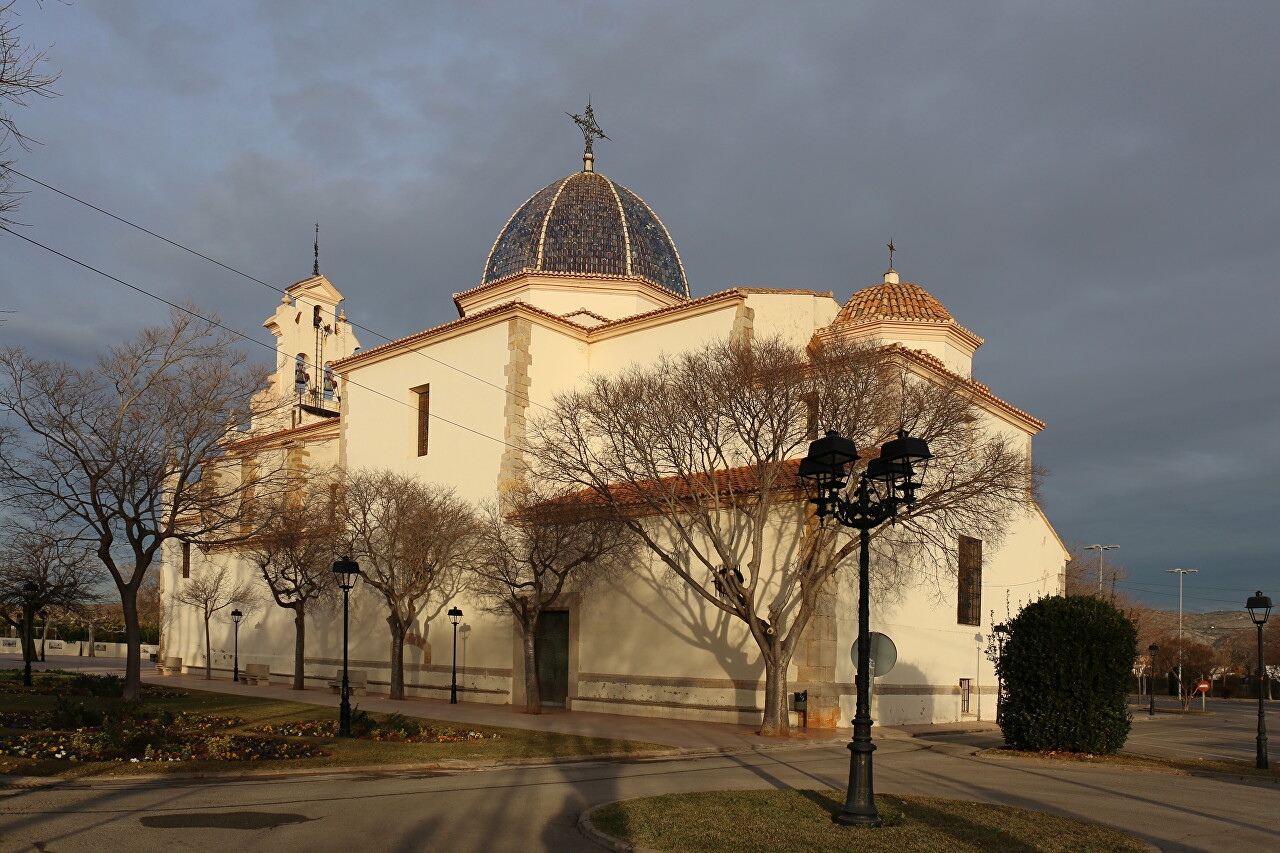
The dome above the transept is covered with dark blue glazed tiles and topped with an openwork wrought-iron cross.
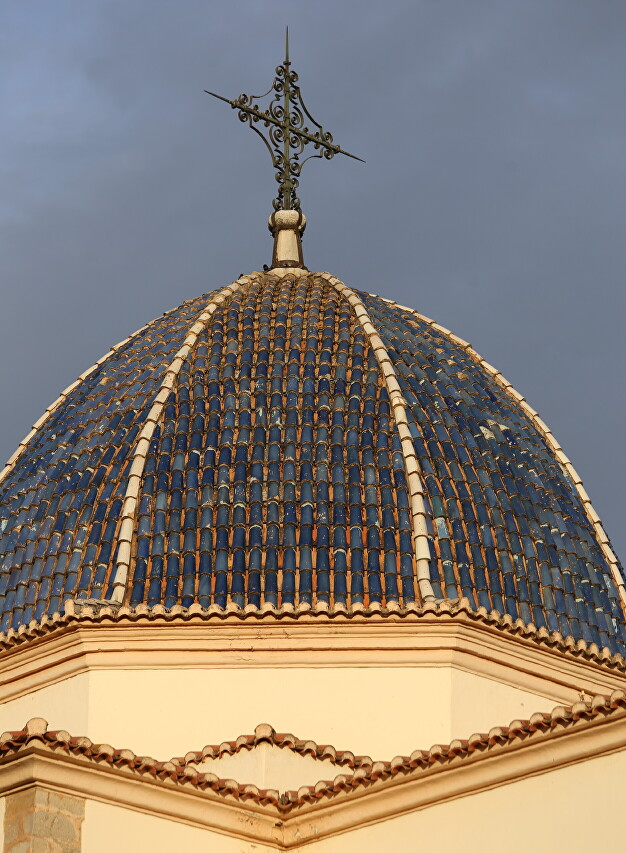
Above the main entrance is a belfry surmounted by a weathervane depicting Peroto de Granjan plowing. There are three small electric bells on the belfry, and the profession of bell ringer is a thing of the past.
